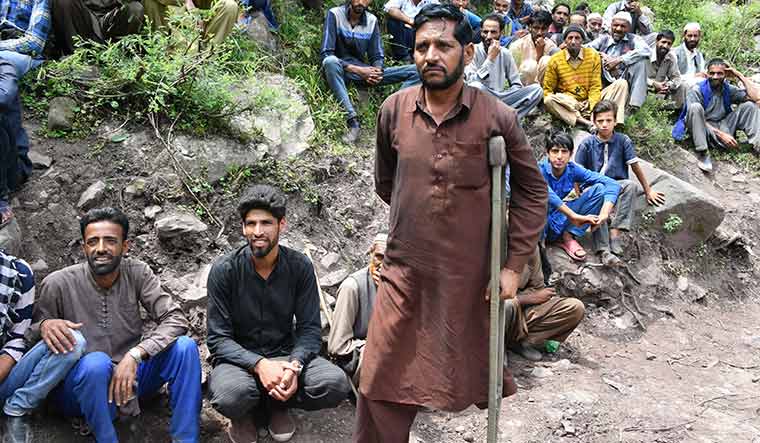UNLIKE THE REST of Jammu and Kashmir, there is no unrest or uncertainty in the border villages of Uri sector. There is clear cheer here for the Union government’s decision to abrogate Article 370.
That is because more than a dozen villages along the Line of Control, including Gohallan, Sangria, Jawla, Nawla, Salamabad and Urusa, house the Gujjar community, and its members say they were never treated on par with the Kashmiris. Gohallan, for instance, has 4,000 Gujjars, most of whom work as porters and labourers for the Indian Army, helping them build bunkers and infrastructure facilities. A few are small farmers, growing corn and rice, and some others earn their living by selling sheep or goat milk.
“We never received any benefits from Article 370,” says Ghulam Hussain, 70, a farmer. “The special status actually dented the development of the state. In the absence of any industries and factories, there were no jobs for us. We were duped in the past by the political class for their own benefits.”
Many houses in the villages are damaged, allegedly because of the shelling from the Pakistani side. Uri also saw a terror attack in September 2016 that killed 18 jawans of the Army’s 12th brigade. In retaliation, India launched surgical strikes in Pakistan-occupied Kashmir.
Since August 5, the day Home Minister Amit Shah announced the revocation of Article 370 and the bifurcation of the state into two Union territories, there have been reports of intermittent firing from Pakistan, with India responding in kind. Even our interaction with the villagers was interrupted by a couple of artillery shells allegedly fired from Pakistan’s forward post at Tambakuwalan, located high in the mountains. The villagers, however, are used to the shelling and its sound.
“As a border village, we only bear the brunt,” says Mohammad Sadiq, 50. “Our houses are damaged by the shelling. Kashmiris are safe in the city. They are prosperous, their kids are studying abroad and they are using poor people for stone pelting.”
The Gujjars here, mostly Muslims, largely kept away from militancy, which reached its peak in the 1990s. But a few like Sadiq did take up arms. He and a dozen others, however, surrendered later and are now working with the Indian Army. Sadiq, who lost his left leg in an accident, says the special status benefited only a certain class of people. “Now development will happen,” he says. “It is time to join the mainstream.” Right now, there is no high school in the area; for higher studies, children go to schools in Baramulla or Srinagar.
The Gujjars of Kashmir, traditionally a nomadic pastoral community, are scheduled tribes. Before partition, Gujjars are said to have dominated the areas now in PoK; their number was estimated to be more than 60 lakh then. According to the 2011 census, there are 9.8 lakh Gujjars in Jammu and Kashmir.
The community is also said to be the eyes and ears of the Army, alerting it of any infiltration from across the border. But that has made them a target of militants. “We cannot even sleep at night,” says Shabeer Ahmed, 45. “We do not know when someone from across the border would come and slit our throats. Militants have killed more of us than the Pakistani army. They kill us because they consider us spies working for the security forces.” According to Ahmed, a contractor from Salamabad was killed recently. “A doctor from Uri was shot down in Baramulla,” he adds. “A few days ago, a shepherd was killed in our village on the suspicion of leaking information to the Army.”
Ahmed, however, could not hide his excitement on seeing a camera. The last time he saw one, he says, was at his wedding. He has never travelled beyond Baramulla.
The border villages of Uri, which also have a few Sikh families, are now hoping that their life would change for the better, that the promise of development—like the special status—does not just stay on paper for them.


